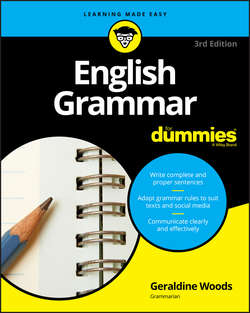Читать книгу English Grammar For Dummies - Woods Geraldine - Страница 7
Part 1
Building a Firm Foundation: The Parts of the Sentence
Chapter 1
Using the Right Words at the Right Time
Thumbing Your Way to Better Grammar
ОглавлениеI live in New York City, and I seldom see thumbs that aren't tapping on very small screens – texting (sending written notes over the phone), IMing (instant messaging), tweeting (sending 140-character notes), posting comments on social media, or simply jotting down ideas and reminders. I can't help wondering what sort of grammar will evolve from these forms of communication. Perhaps the 19th edition of English Grammar For Dummies will be only ten pages long, with “sentences” like u ok? lmk – bbl. (Translation for the techno-challenged: “Are you okay? Let me know. I'll be back later.”)
At present, however, match the level of formality in electronic communication to your situation, message, and audience. If you're dealing with a friend, feel free to abbreviate and shorten anything you like. If you're communicating with a co-worker or an acquaintance or a general audience on social media, conversational English is probably fine, and it may even be the best choice. Formal English, on some websites, comes across as stiff and artificial. In general, the more power the recipient has, the more careful you should be. When you're unsure of your audience or writing to someone you want to impress with your level of knowledge, play it safe and opt for formal English.
Before you post or tweet, skim what others have written. Chances are you’ll identify a preferred level of formality. If you want to fit in, match that style. Or be a rebel, if you wish! (Check out Chapter 16 to see more guidelines for electronic communication.)
